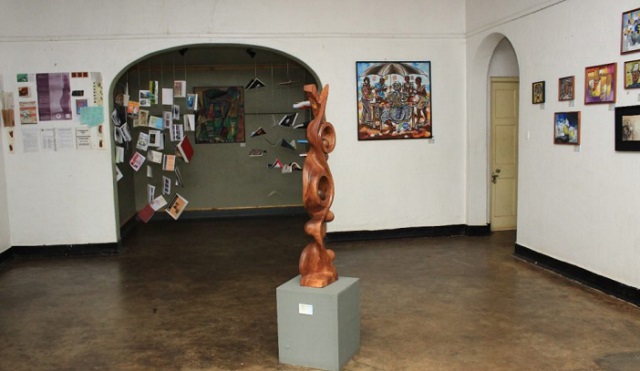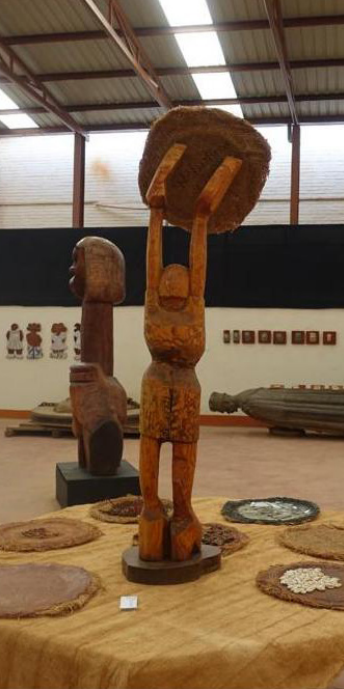
Are young curators doing enough gate-keeping of art back home?
Kampala, Uganda | DOMINIC MUWANGUZI | Art exhibitions in Kampala in recent times have gained a good reputation far from what they were yesterday. They are curated by professionally trained curators who have the confidence to select what is suitably fit to show to the public and contextualize the art to a particular theme. The art curators are young and vibrant and therefore are keenly interested in pushing the boundaries of art making with the artists they are working with. They have also equally acquired broad understanding of the global art world because of their training and exposure to different international art residences and scholarships. As such the level of gate -keeping of art in several art exhibitions on the local art scene has generally improved and now is now familiar to the international standards where conversations between artwork, artists and audience are stimulated. Conversely, there is a looming concern on the absence of local art curatorial infrastructure inform of academic scholarship programs or residences that train budding art curators. The recent trend is that fresh graduates from art school who are interested in the profession will apply for a scholarship in an overseas institution.
This vacuum, though often rationalized on the premises that the course in curatorship is too expensive to run locally or on the continent, has the potential to create controversy in all the aspects of curating. Art curators do not only perform a singular role of gate-keeping art to be shown in exhibitions. They additionally supervise and commission artists to produce artworks for different shows, provide write ups for exhibitions and may represent artists in the art market from time to time. This enormous demand on the curator requires their routine interaction with the artwork and artist in order to produce a finely tailored show to the public. With the physical distance between artist and curator, such mutual relationship may not be realized. In the past, we have witnessed a curator flying in from anywhere in the world to organize a show within a couple of weeks. The question that begs to be answered here is how much knowledge does this curator have on the artist and their work? Does the curator fully understand the circumstances under which the body of work to be shown was subjected to and how about the expectations of the public? Like mentioned before, there should be a fluid connection between all the four stakeholders of the exhibition: artwork, artist, curator and public, in order to guarantee a successful show.
The digital era has over simplified many sectors across the world but not necessarily art. Even with the surprising surge in art appreciation and purchase during the Covid-19 pandemic, the galleries and artists who walked away with a huge smile were those who had long built a strong and good reputation with the artist and art market through physical interaction. Therefore physical interaction remains a critical aspect of art which cannot be easily substituted with virtual access to art. Through physical interaction, the intricate details of the artworks and its producer, the artist, are appreciated and captured. Not surprisingly, these contribute to the success or failure of the exhibition. This is the case, because art is by and large a form of expression that reveals the artist’s emotions which are influenced by their immediate surroundings. In order to be part of this artistic encounter, the curator who is the benefactor of the artist in the exhibition must be actively engaged in the process of revealing the emotions in the art.
The exhibition Kampala: Unmapped 2014 curated by five emerging curators on the Kampala art scene was the first initiative in the direction of local stewardship of art. The young curators including Robinah Nansubuga, Phillip Balimunsi, Moses Serubiri, Hasifah Muyala and Violet Natume worked closely with the artists to produce artworks for the exhibition. The strength of the exhibition was not only in the untraditional space where it was mounted, but in the knowledge the curators showcased in understanding the concept of the exhibition. This success would otherwise have not been possible to realize if the curators where physically detached from the process of art making, and the realities of the past and present social cultural landscape of Kampala city. Similarly, the recent show at Nommo gallery, Collective Memories, curated by eight budding curators, excelled partly because of the localization of the theme to the interests of the respective curators. Each curator therefore was tasked by the head curator to create a storyline to the artwork based on their background or field of specialty. This approach stimulated the idea of intimacy between artwork, artist and curator.
The dilemma facing many budding curators on the continent is that they are not home based. The argument that they cannot be professionally successful as curators back home where the art industry is under developed influences many to stay in Europe and America where art infrastructure is fully developed. In doing so, they create a vacuum for the development of the art industry by not adequately adding the much needed voice to the art. Yet in recent times, because of a surge in the interest in Contemporary African art in global art circles, more and more exhibitions funded by international art funds are being staged on the continent. Probably, with such a reversed pattern young curators based in the West will return home and grow their profession by forging sustainable relationships with artists and their work.
****
Images courtesy of the Internet
 The Independent Uganda: You get the Truth we Pay the Price
The Independent Uganda: You get the Truth we Pay the Price


